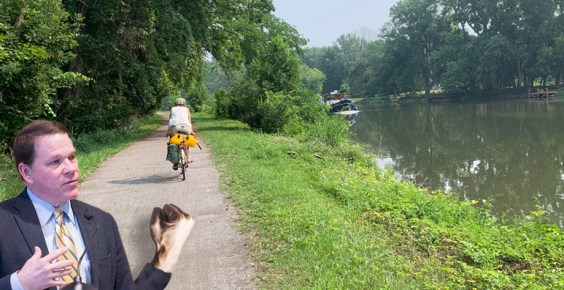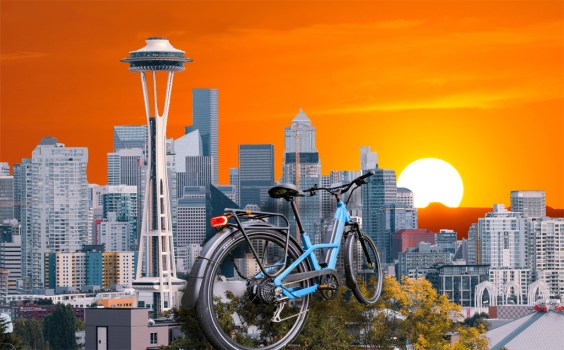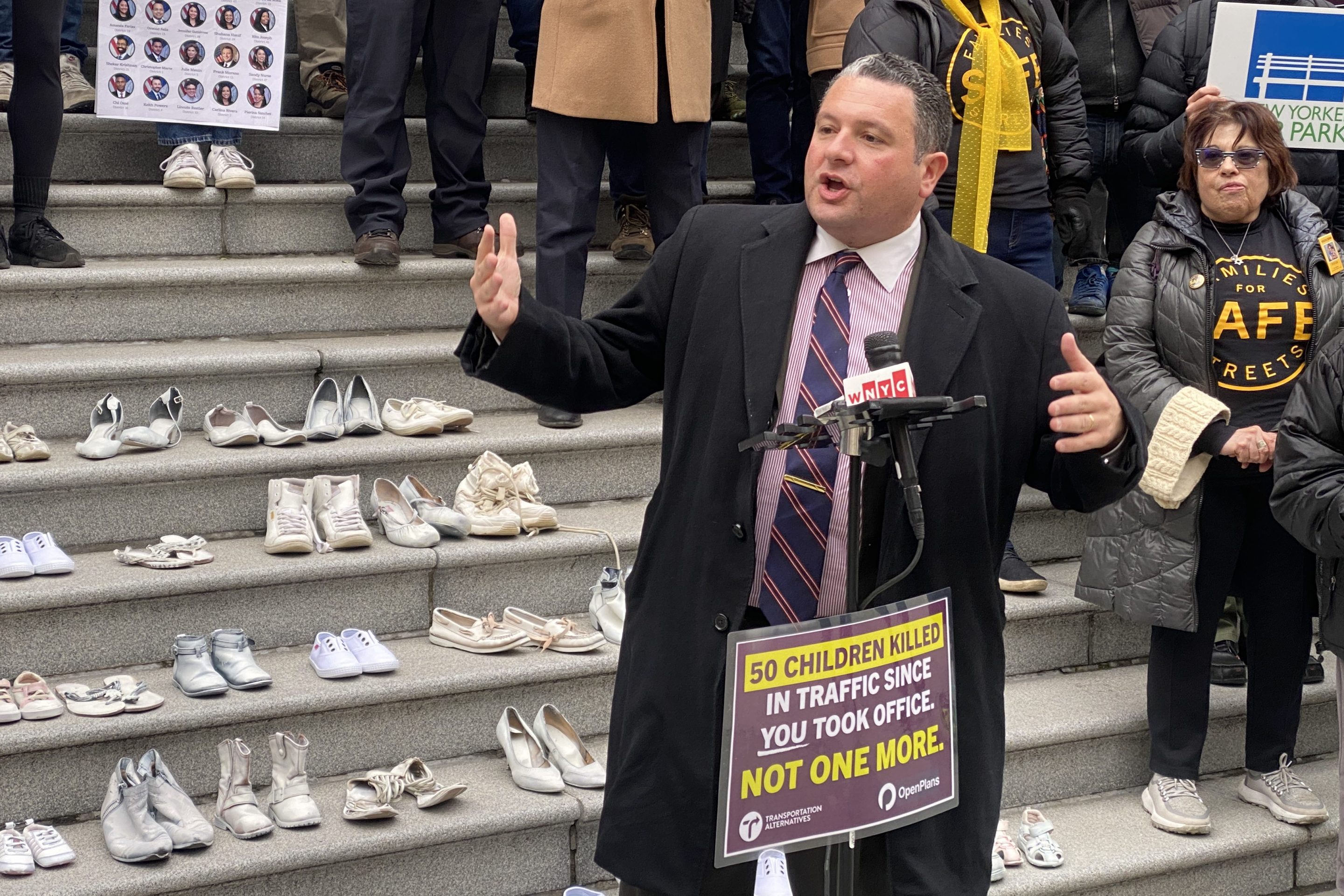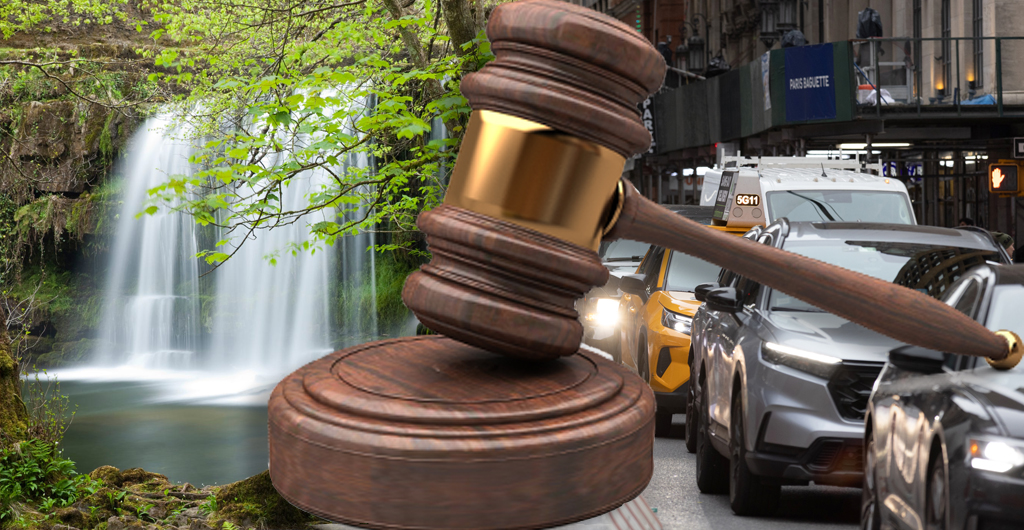The question was debated, albeit briefly and in slow motion, by two New York City Department of Transportation employees in the pages of the New York Times last week. Last week, in a Sunday City section op/ed piece, Andrew Vesselinovitch argued that DOT is not doing enough for New York City cyclists. Vesselinovitch is the former Director of DOT's Bicycle Program who made headlines in July when he claimed in a publicly-released resignation letter that the agency's leadership was purposefully undermining the progress of New York City's bicycle network. This week, a response to Vesselinovitch comes from Ryan Russo, the DOT's newly appointed Director of Street Management and Safety. Their back-and-forth is re-printed below, in full:
Pedal PoliticsAugust 20, 2006By ANDREW VESSELINOVITCH
NEW YORK could be one of the best cities in the world for riding bicycles. The weather is moderate (usually). The terrain is generally flat. And many of us live close enough to where we work and shop to make bicycling a reasonable alternative to driving or taking public transportation.
But New York City has been slow to create bike lanes to promote bicycling and to keep riders safe from automobile traffic, despite an expressed commitment to do so.
In 1997, city planners issued a master plan that called for a 900-mile network of bike paths (in places where there are no cars, like in Hudson River Park) and bike lanes (on streets with auto traffic) throughout the five boroughs. Because the paths and lanes must go in both directions, that means 1,800 miles of painted bike lanes and paths.
Most of this, about 1,300 miles of it, was to be created on streets managed by the New York City Department of Transportation. (Most of the rest is managed by the Parks and Recreation Department or the State of New York.) For five years, until last month, when I stopped working at the Transportation Department, it was my job to see that as many miles of new bike lanes as possible came into use.
My small staff of six and I could have produced as many as 50 miles of bike lanes each year, without taking away any parking space or limiting any street's capacity for cars or trucks. The cost is minimal: about $20,000 per mile (for traffic analysis, design and labor), 80 percent of which is reimbursed by the federal government.
From 1997 to 2004, the Transportation Department put nearly 250 miles of bike lanes in operation. But in the last two years, the city produced less than 20 miles. At this rate, it could take more than a century to finish the proposed network. Our efforts were so rarely encouraged, and so often delayed, that I came to the conclusion that the department is not truly committed to promoting bicycling in New York.
Marking of the Eighth Avenue bike lane in Manhattan, for example, was postponed for more than two years after two community boards requested it, in 2003. If a city councilwoman had not personally intervened to get the lane finished, I am certain it would still be incomplete.
After a new bicycle and pedestrian path was opened on the Williamsburg Bridge in late 2002, complaints poured in about the 2-inch-high metal covers that had been placed over expansion joints in about two dozen places. These bumps jarred bicyclists and tripped up pedestrians. I brought this to the attention of the department's bridges division, but the covers were not replaced until 2005, after cyclists injured on the bumpy road filed lawsuits.
Some residents object to having bike lanes, in the mistaken belief that to encourage bike riding is to pose a menace to pedestrian safety. But bicycles are not nearly as dangerous as cars are. And they are a much healthier and more environmentally friendly form of transportation.
Given that more than half the population is overweight, in part because of too little physical activity, and given how much auto traffic contributes to the city's poor air quality, the city should be doing all it can to encourage bicycling.
Rather than delay the creation of bike lanes already in the planning books, the city should make building the lanes a priority. Just as he made the hard decision to rise above objections to the smoking ban, Mayor Michael Bloomberg should direct city officials to complete the remaining bike lanes as soon as possible.Andrew Vesselinovitch, the director of the city Transportation Department's bicycle program from 2001 to 2006, is working on a master's degree in architecture at the Illinois Institute of Technology in Chicago.
September 3, 2006Letters to the EditorNew York is Bike-Friendly
To the Editor:
Contrary to 'Pedal Politics,' by Andrew Vesselinovitch (Op-Ed, Aug. 20), the Department of Transportation has embraced biking as a convenient, environmentally friendly alternative to the car.
We continue to add bike lanes throughout the city, most recently on Eighth Avenue, connecting Central Park to the Hudson River Greenway, and placing a network of lanes and paths in downtown Brooklyn leading to the East River crossings. We do, however, have to work hard to win local support for the bike lanes, as there is often significant community board and elected official opposition to these plans.
Yet our work is clearly paying off, as this year Bicycling Magazine named New York one of the top bicycling cities in the United States, and we are seeing steady growth in the number of cyclists using our streets. The Department of Transportation is committed to further improvements in the years to come. This includes an ambitious schedule for expanding the city's bike network and a new safety outreach program that will educate both motorists and cyclists.
Ryan RussoLower Manhattan
The writer is director for street management and safety, Department of Transportation.





